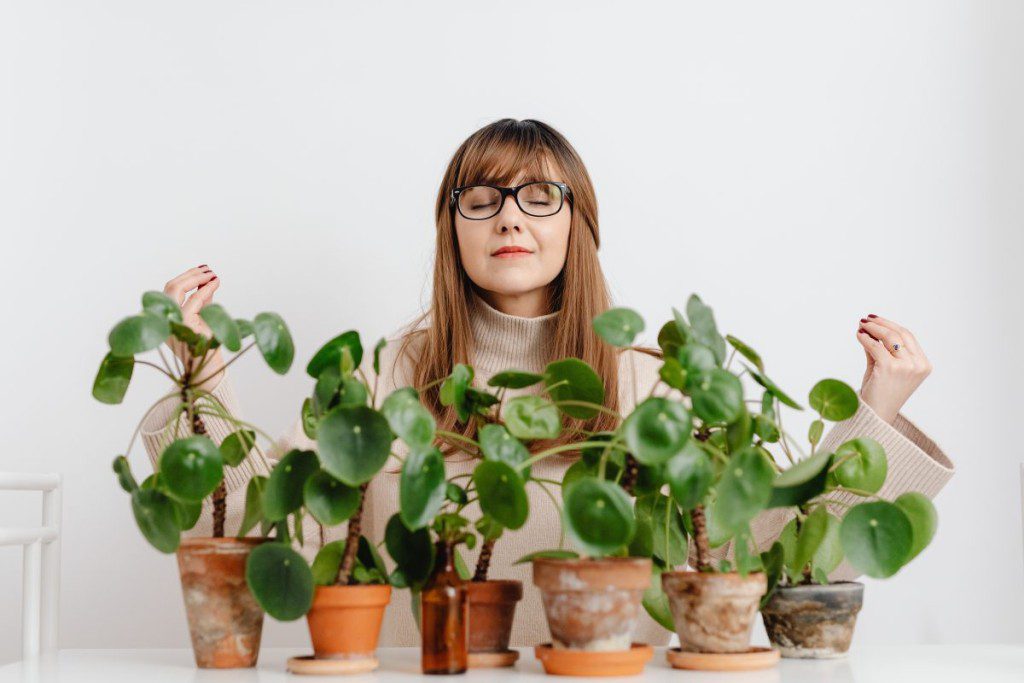If you’re looking for an easy way to add a little bit of life to your home decor, house plants are the perfect solution. By adding a few potted beauties around your living space, you can instantly transform it into a vibrant and lush paradise. However, in order to make sure your new friends thrive in their environment, it’s important to do some research and understand the fundamentals of proper plant care – so that’s why we’ve compiled this essential guide on how to get started! Read on for our top six tips on keeping your beloved houseplants healthy and happy for years to come…
Find the right pot for your plant
Choosing the right pot for your plant may seem like a simple task, but it can make all the difference in the growth and health of your greenery. It’s essential to find a pot with adequate drainage holes to allow excess water to escape and prevent root rot. Additionally, size matters when it comes to plant pots – you’ll want to ensure that your plant has enough room to spread out its roots and grow. A pot that’s too small can hinder the plant’s growth and make it more susceptible to disease. By selecting the right pot for your plant, you’re setting yourself up for success in creating a thriving indoor or outdoor garden.
Know when to water your plants
Keeping plants alive can be a daunting task for some. But fear not, with the right tools and knowledge, you can easily become a plant-parent extraordinaire! The key to keeping your plants healthy is knowing when to water them. Over-watering can lead to root rot and under-watering can cause dehydration. So, how do you know when it’s time to give your plants a drink? There are a few methods, but the most common is using a moisture meter or simply feeling the soil. A moisture meter is a handy tool that will give you an accurate reading of the moisture level in the soil. If you prefer a more tactile approach, feeling the soil with your finger is just as effective. When the soil feels dry to the touch, it’s time to give your plants a good watering. Happy plant parenting!
Provide enough light
Bringing a bit of greenery into your home is a fantastic way to brighten up a space and improve your air quality. However, different houseplants and flowers have different light requirements, so it is important to do your research before placing them in your home. Not only will this help your plants thrive, but it will also ensure your home looks its best. For example, some plants require direct sunlight to grow, while others prefer a shaded area. By determining where in your home each plant will receive the appropriate amount of light, you can ensure they all look their best and remain healthy. It may take a bit of time and effort to research each plant’s specific needs, but the end result is worth it for a beautiful and healthy home environment.
Don’t forget to fertilize
As a seasoned gardener, you know that there’s nothing quite as important as ensuring your plants are getting the nutrients they need to thrive. That’s why you definitely don’t want to forget to fertilize during the growing season. Using a balanced liquid fertilizer every two weeks will help give your plants the boost they need to produce beautiful blooms and foliage. Not only will your plants be healthier, but they’ll also look more vibrant and colorful, making your garden the envy of the neighborhood. So make sure you’ve got your routine down pat, and get ready to watch your garden flourish!
Leave breathing room
Giving space to things always allows them to grow and flourish, whether it’s a child, a pet, or even your plants. It is important to keep this in mind when dealing with containers or gardens, as overcrowding often leads to stunted growth and a lack of productivity. Leave breathing room for your plants by not overfilling containers or crowding them together in one space. They need sufficient access to sunlight, air, and nutrients to thrive. Remember that the goal is not to cram as many plants as possible into a limited space, but to create a healthy and vibrant garden that can be enjoyed for years. So, show your green friends some love by giving them the room they need to live their best lives.
Give them time alone
Plants are living organisms that require care and attention, just like any other being. As much as we may want to constantly rearrange them for aesthetic purposes, it’s important to remember to give them some alone time. Moving plants around too frequently can cause shock and stress, which can ultimately lead to their demise. Instead, let them settle into their environment and thrive at their own pace. Not only will they thank you for it, but you’ll have a healthier and more vibrant indoor garden in the long run. Remember, patience is key when it comes to nurturing our leafy friends.
Plants with benefits
The following plants not only serve practical purposes but also add beauty and a sense of well-being to your indoor environment. Remember to provide them with the appropriate care, to ensure their optimal growth and benefits.
Aloe Vera
If your aloe vera is wilting you need to react. Find out what to do if your aloe plant is turning brown as soon as possible so it can keep serving its purpose. Aloe vera is a versatile and beneficial plant to keep indoors. It is well-known for its gel-filled leaves, which have soothing properties for minor burns, cuts, and skin irritations.
Basil
Basil is a popular culinary herb that not only adds flavor to your dishes but also offers health benefits. It contains antioxidants and essential oils that have antibacterial properties. Keeping basil in your indoor garden allows you to have fresh herbs readily available for cooking, making your meals more flavorful and nutritious.
English Ivy
English Ivy is an excellent choice for indoor plants because it helps purify the air by removing toxins like formaldehyde, benzene, and xylene. It can be particularly beneficial in rooms with limited ventilation or areas prone to pollutants. English Ivy is a trailing vine that can be grown in hanging baskets or trained to climb walls, adding a touch of greenery to your space while improving indoor air quality.
Placing a little effort into the care of houseplants can make all the difference in the success of their growth. With the right pot, proper watering, ample light, fertilization, breathing room, and some time to adjust, your plants will thrive and bring life to any home. It’s important to remember that each plant has different needs so do your research before you purchase your new plants. Once you find what works best for your plant family it becomes easier to keep them healthy. Don’t discount nature’s beauty – take some time for yourself and enjoy tending and nurturing these beautiful natural companions!






